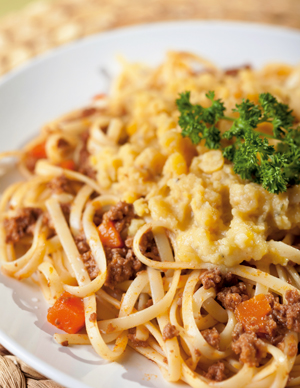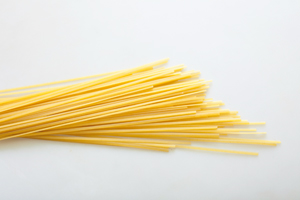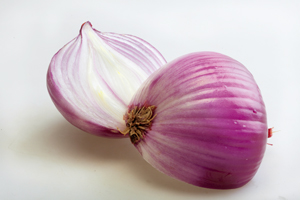 On a recent trip to Chongqing, I had one of the best bowls of noodles I’ve had in my life. The restaurant, if it could be called that, was across the street from the White House nightclub – a place once notorious for its mobsters and their hangers-on. It was, as most winter days are in Chongqing, a foggy one. And cold. And rainy. The clouds descended about the city and soaked everything in a weighted dampness. The noodle joint was the size of three closets, and at the entrance sat a table full of bowls: soy sauce, garlic, ginger, green onions, sesame oil, vinegar, chilli oil, pork fat, salt, sugar, MSG, pepper and ground Sichuan pepper, as well as pots of rich, heavenly smelling meat sauce and chunks of beef. A cauldron bubbled away on the stove,
On a recent trip to Chongqing, I had one of the best bowls of noodles I’ve had in my life. The restaurant, if it could be called that, was across the street from the White House nightclub – a place once notorious for its mobsters and their hangers-on. It was, as most winter days are in Chongqing, a foggy one. And cold. And rainy. The clouds descended about the city and soaked everything in a weighted dampness. The noodle joint was the size of three closets, and at the entrance sat a table full of bowls: soy sauce, garlic, ginger, green onions, sesame oil, vinegar, chilli oil, pork fat, salt, sugar, MSG, pepper and ground Sichuan pepper, as well as pots of rich, heavenly smelling meat sauce and chunks of beef. A cauldron bubbled away on the stove,
beckoning as steam rose up in magical
puffs every time someone opened its lid.
I was curious about the mobsters, and the girl sitting behind the table was eager to sell her noodles, so we chatted. She knew nothing about the mobsters – they’re a night owl bunch, and she packed up her stand by 7pm. The girl suggested that I try her wanza noodles. As well-versed as I am in noodles, this baffled me. It was something I had never seen in Beijing, or anywhere else in the north. With practiced speed and grace she dipped a spoon into a dozen bowls, and set aside a bowl of sauce, ready to be united with the star of the show. A handful of fresh flour noodles and pea sprouts went into a bubbling tankard. A few stirs and seconds later, out they came. To finish: ladles of soft, boiled peas and the fragrant, glistening meat sauce. I sat down with my chopsticks, added a splash of vinegar, mixed, and ate.
My eyes rolled back. It was glorious. The noodles were chewy and springy, the perfect amount of resistance. Sichuan and spicy pepper oil tickled and danced on my tongue. The pea sprouts were at their best, the height of their season – tender, grassy and green. Their boiled cousins had the texture of well-prepared hummus: floury, but not too smooth. The meat sauce was intensely savory, caressing the noodles. Most amazingly, while the flavors melded together, you could still taste each component separately.
I slurped and I chewed and the bowl was empty in an instant. I begged the girl for the recipe. Whether out of proprietary interest or genuine nonchalance, she shrugged. "You know, this and that," waving in the general direction of the 20-some-odd ingredients in front of her. I wanted to wait around for another customer to order the same bowl so I could catch her in action, but it was well after lunchtime and I had a plane to catch. The girl happily took my compliments and six kuai, and invited me to come back and visit her soon.
When I came back to Beijing, I realized that there was no way I could replicate her noodles. Instead, I became intrigued by the idea of two pasta sauces, each serving a purpose, coming together in a delicious marriage. Not the gloopy, heavy white and red sauces you so commonly see in mediocre Italian joints, but a lighter, olive oil-based bolognese, spiced with cinnamon, cayenne and Sichuan pepper. For the boiled peas, I thought red or yellow lentils would break down in the same lovely way. The end result was an elegant but hearty bowl of pasta. Nothing like Chongqing, but then again, nothing ever is.
 Pasta with Two Sauces
Pasta with Two Sauces
(Serves 2-3)
Note: Cook the meat sauce first because it takes longer, then the lentil ragout. Both sauces freeze perfectly, so you can make batches and store it up for lazy nights in.
Spiced meat sauce
3 tbsp olive oil
2 tbsp tomato paste
500g ground beef
1 medium onion, diced
3 cloves garlic
1 small carrot, diced
1 teaspoon cinnamon
¼ teaspoon cayenne
Salt
Pepper
¼ teaspoon ground Sichuan pepper
3 cups red wine
 In a medium pot, heat the olive oil until hot. Add tomato paste and stir until fragrant; be careful not to burn it. Then add beef and cook until browned. Add the onions, garlic, carrots, cinnamon, cayenne, salt, pepper, and Sichuan pepper, and cook for 2 minutes. Add red wine. Bring it to the boil and scrape up any bits at the bottom of the pan. Cover and simmer for one hour, adding a touch more hot water if the sauce is too dry.
In a medium pot, heat the olive oil until hot. Add tomato paste and stir until fragrant; be careful not to burn it. Then add beef and cook until browned. Add the onions, garlic, carrots, cinnamon, cayenne, salt, pepper, and Sichuan pepper, and cook for 2 minutes. Add red wine. Bring it to the boil and scrape up any bits at the bottom of the pan. Cover and simmer for one hour, adding a touch more hot water if the sauce is too dry.
Lentil Ragout
4 tbsp olive oil
2 garlic cloves, minced
¼ cup of diced celery
¼ cup of diced carrot
¼ cup of diced onion
Salt
Pepper
1½ cups of red or yellow lentils
Zest and juice of 1 lemon
 Heat olive oil in a medium saucepan, and then add the garlic, celery, carrot, onion, salt and pepper. Cook for 5 minutes or until translucent. Add the lentils. Cover with water. Simmer, covered, for about 20 minutes, or until the lentils are tender. If there is too much water, uncover the pan and boil vigorously until the lentils are saucy, but not liquidy. Take the sauce off heat; stir in lemon zest and juice.
Heat olive oil in a medium saucepan, and then add the garlic, celery, carrot, onion, salt and pepper. Cook for 5 minutes or until translucent. Add the lentils. Cover with water. Simmer, covered, for about 20 minutes, or until the lentils are tender. If there is too much water, uncover the pan and boil vigorously until the lentils are saucy, but not liquidy. Take the sauce off heat; stir in lemon zest and juice.
To assemble
Cook string pasta (linguine, fettuccine, spaghetti, or even angel hair) according to directions. Drain well. Return to pan with meat sauce and stir until combined. Serve with lentil sauce on top.Drizzle with olive oil, garnish with parsley and pass parmesan cheese around at the table.



